Personality and Temperament
With exotic looks to match its name, the Bengal cat originated as a cross between the Asian leopard cat and a domesticated cat. A number of breeds were used in the Bengal cat's development, including the Egyptian Mau, Ocicat, Abyssinian, Burmese, American Shorthair, and domestic shorthair cats. These days, members of the Bengal cat breed are the product of a cross between two purebred Bengal cats.
Playful and active, Bengal cats are excellent pets. Quite a bit less standoffish then some other wildcat hybrids, these incredible cats enjoy affection and develop close bonds with their family members. Although they might be up for a cuddle now and then, Bengal cats are anything but couch potatoes. This highly active breed needs a lot of daily activity and play to thrive.
Bengal cats love to climb and like their wild, jungle-dwelling cousins, they seek high vantage points from which to view their domain. Curious, they like to be in the middle of everything and they enjoy learning how things work.
Bengal cats are notorious for opening doors, activating light switches, flushing toilets, emptying cupboards, and more. They are eager to learn tricks, and thanks to their high level of intelligence, they’re very easy to train. Try teaching your Bengal cat "sit" and "shake paw," and games like fetch.
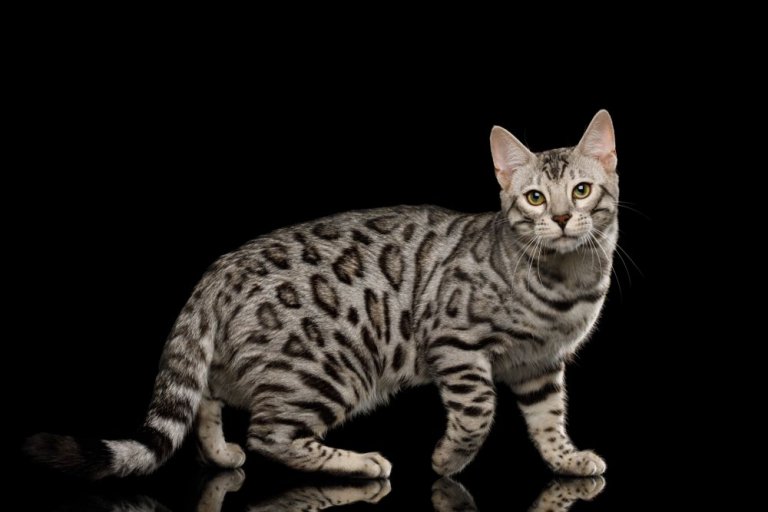
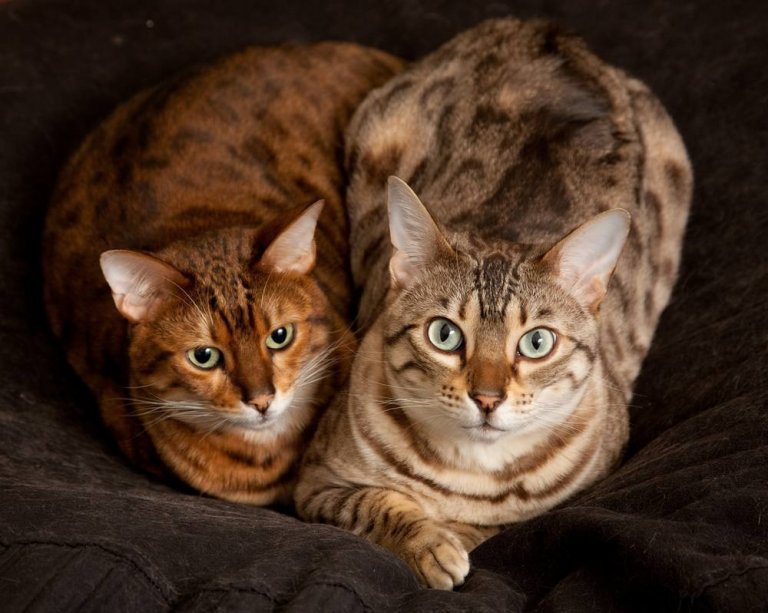
Care
Nutrition
Grooming
Exercise
Health
Just like their wild cousins, Bengal cats need a diet that focuses on meat, particularly if they are members of the first three generations. Most commercial kibble is not really suitable for Bengals, as it is too high in carbohydrates. High-quality canned, fresh or raw food is a good choice as it generally has a higher meat content.
While Bengal cats are perfectly capable of grooming themselves, they appreciate attention and will enjoy brushing on a regular basis. Teach your cat to accept nail trimming from a young age, and brush their teeth daily.
Bengal cats need lots of exercise—far more than the average cat. Although most cats spend most of their time asleep, these frisky felines require numerous play sessions every day, particularly during their first few years of life.
When we say that Bengal cats are high-energy, we mean it. These cats have a reputation for zooming through the house, jumping on furniture, and not stopping until they've made several laps. Interactive play is absolutely essential to your cat's well-being and it'll help save your furnishings, too.
Teaser toys, lasers, and battery-operated cat toys that encourage energetic play are absolute essentials. Make sure your cat has more than one scratching post and be sure to treat them to a tall cat tower that satisfies their natural need to climb. Some Bengal owners use exercise wheels. Much like hamster wheels, these allow your Bengal cat to safely exercise indoors. The more you "catify" your house, the better.
Bengals are often happy to walk on a leash, as they have a built-in need to explore. If you adopt a Bengal kitten, teach them how to walk on a harness and leash from a young age if you’d like to enjoy this activity together. Safe outdoor exploration offers the ideal opportunity for exercise and stimulates your cat's inquisitive mind.
Like many cat breeds, Bengals do have the potential to develop some known health issues. Eye problems such as cataracts and progressive retinal atrophy (PRA) are concerns and might develop as a Bengal cat ages. The hereditary form of PRA is not limited to older cats, though. It sometimes occurs in kittens with symptoms beginning at an age as young as 12 weeks. PRA causes blindness and there is no known cure.
Some Bengal kittens are born with flat-chested kitten syndrome. This is normally caught by the breeder and with treatment, these cats can go on to live healthy lives.
Bengals might develop patellar luxation, a joint disorder that causes the kneecaps to slip to one side. This affects mobility and may cause discomfort, particularly later in life.
A small percentage of Bengal cats develop a form of enlarged heart called hypertrophic cardiomyopathy (HCM). It’s worth noting that this is a hereditary disease and while breeders can have their cats tested for heart murmurs, it is impossible to predict whether future generations will have HCM. There is no such thing as an HCM-free breeding line.
History
Cat fanciers began experimenting with Asian Leopard cat hybridization more than 200 years ago, but the Bengal cat we know and love today didn’t emerge until the 1960s, when Dr. Willard Centerwall of Loma Linda University began hybridizing Asian Leopard cats to see whether they would pass their immunity to feline leukemia on to hybrid offspring. While immunity wasn’t passed on, something great did result from those early experiments: the beginnings of a future new cat breed.
It took decades for Bengal cats to become standardized. In 1980, Dr. Centerwall sent some of his Bengal cats to Jean Mill, who wanted to decrease the desire for fur as a fashion statement by popularizing domestic cats with exotic looks. At the same time, she hoped to reduce the demand for illegal trafficking in wild cats for the pet industry.
The breed was further developed with the addition of Tory of Delhi, a domestic street cat that was imported from India. Other breeders discovered that Egyptian Mau cats were excellent candidates for pairing with Asian Leopard cats, with the cross resulting in beautiful spotted Bengals.
The International Cat Association (TICA) recognized Bengal cats as an experimental breed in 1983, and full recognition was gained in 1993. The Cat Fanciers' Association (CFA) granted the Bengal breed its official recognition in 2016.
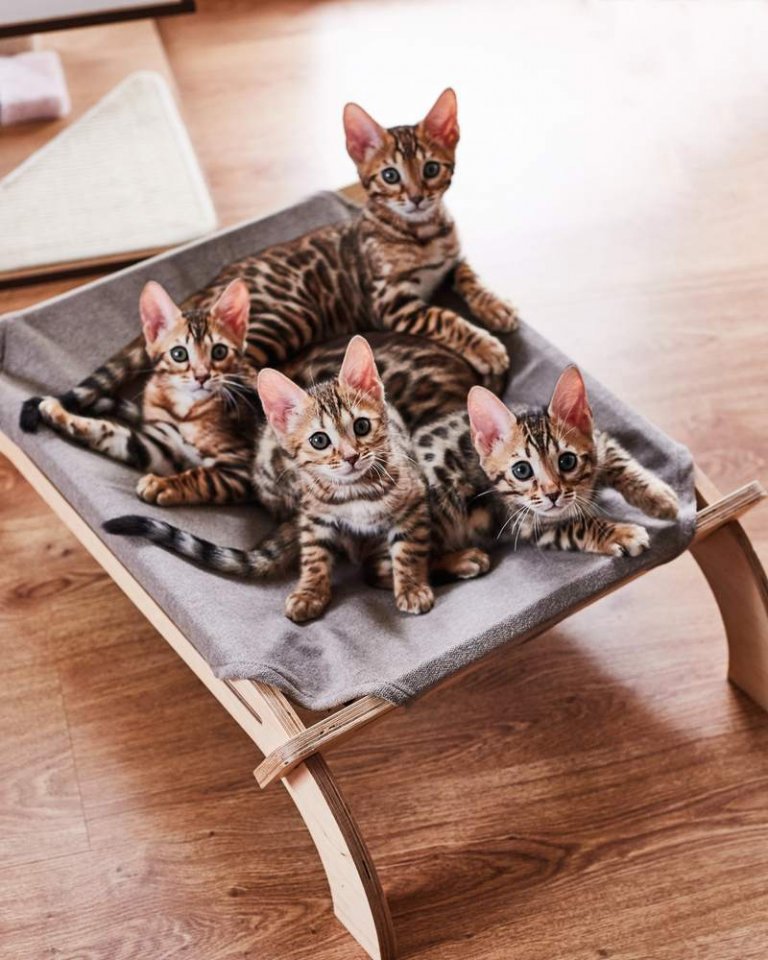
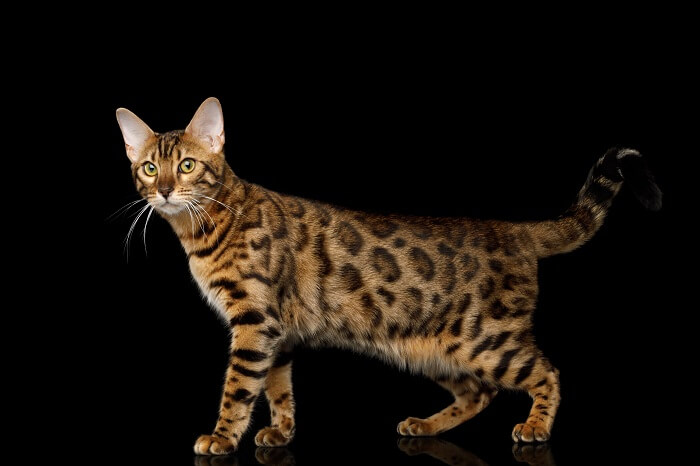
The Breed Standard
Eyes
Legs & Paws
Tail
The Breed Standard
Body
Head
Ears
Coat
Color
FAQ
How much does a Bengal cat cost?
Bengal cats cost between $1,500 - $3,000.
How big do Bengal cats get?
Bengal cats tend to be large in size. A fully grown Bengal cat might weigh between 6-15 pounds or more and range in height anywhere from about 13"-16" inches tall.
How long do Bengal cats live?
The Average lifespan for Bengal is 12-20 years.
Do Bengal cats shed?
Bengal are short-haired cats. Therefore, they do not shed as much as long-haired cat breeds.
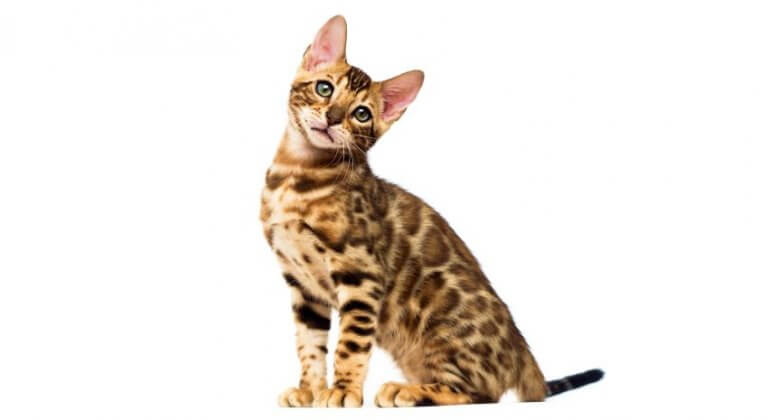
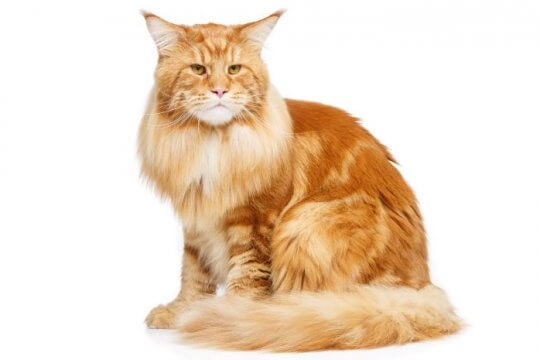
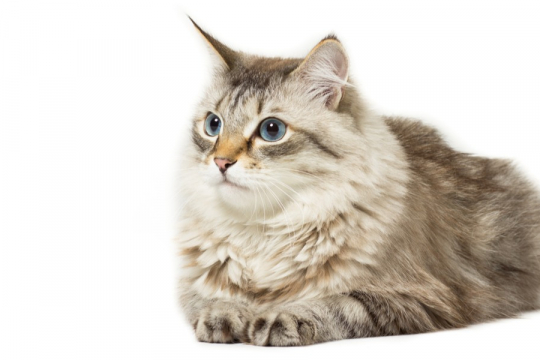
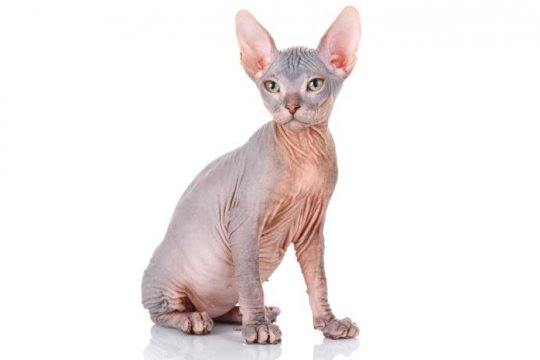
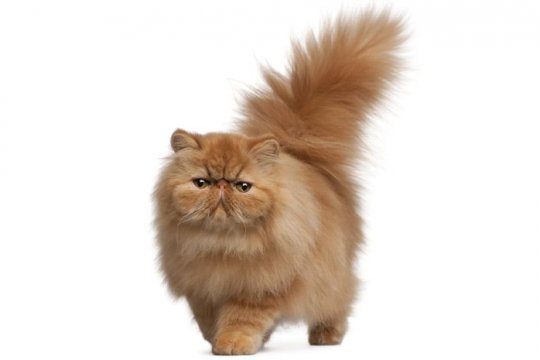
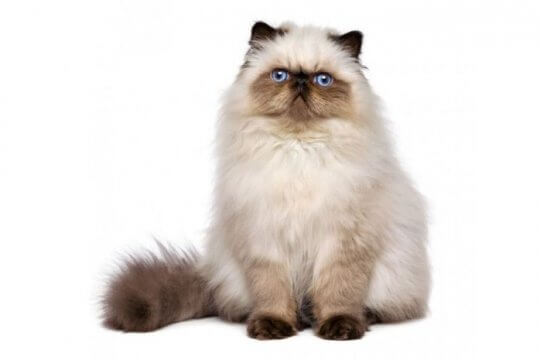
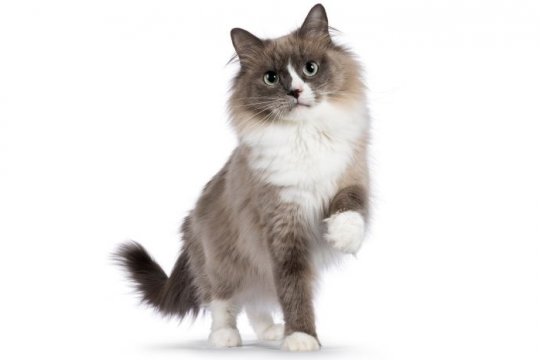
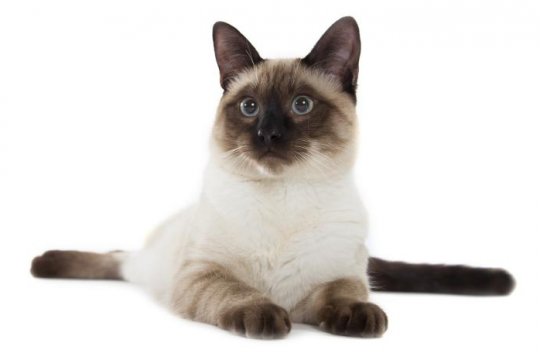
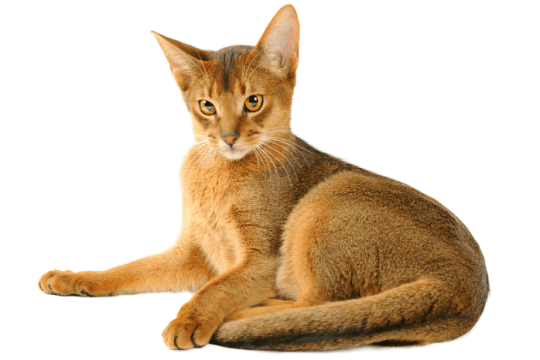
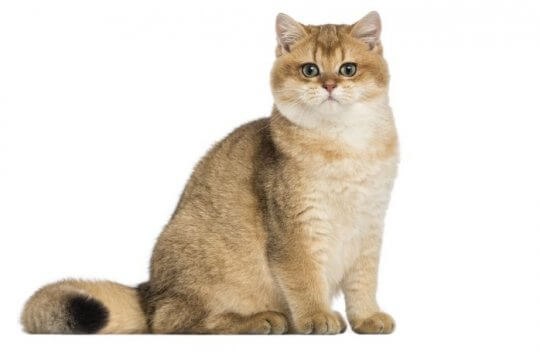
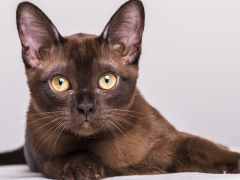
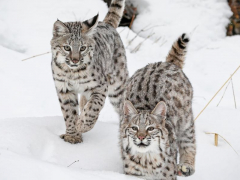
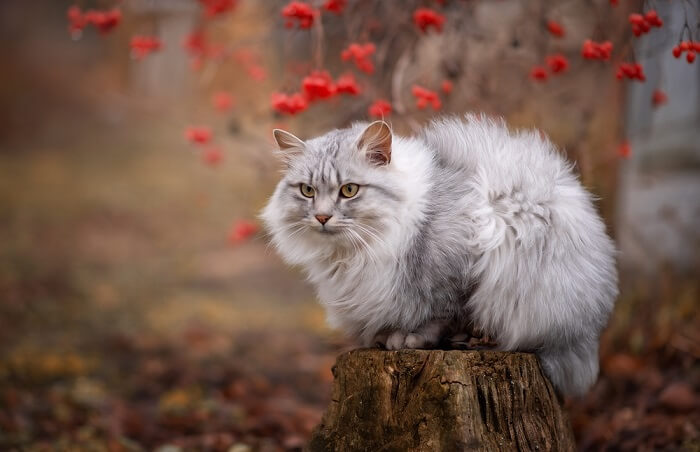



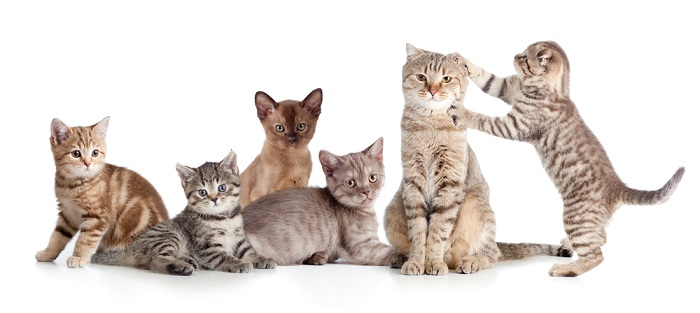
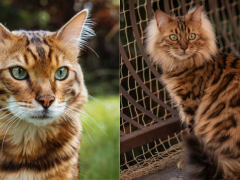
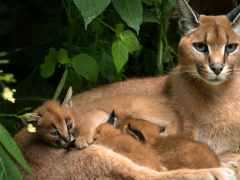
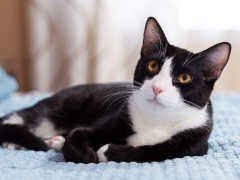
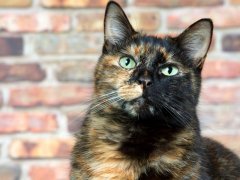
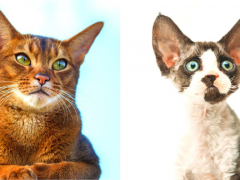
I’m babysitting my ex sister in law’s Bengal cat and man is he something. His name is Slim and I have never seen a cat with such long legs (like stilts lol) and here in the last couple of months the jungle Kitty has come out! This cat doesn’t jump he leaps and sail’s through the air! Never seen anything like it and he climbs on everything and I mean everything and I’m trying to teach him to stop climbing on my stands that has pictures and decorations on cause he’s breaking thing’s and teaching my other two cats that they can do it (which they know better) oh and my refrigerator also. Any suggestions on how to get him to stop doing it? Been raised with cats have always owned cats but never this breed.
I have to say a friend has a beautiful Bengal. She is a gorgeous deep copper color thus her name Penny. It was my first experience with a Bengal. Yes, her fur soft, silky and shiny. She is like a dog and follows him to the door when company comes. She loves water and will play in it. She truly is more like a dog than any cat I’ve known. She is very sociable to all who confronts her. I was unable to afford a Bengal and eventually adopted and rescued a Tuxedo black and white at 6 weeks. Recently a Tabby who was found under a wood pile. Six weeks old and sick with goopy eyes and covered with fleas. She could not see when found. Vet cleared it all up and with continued ointment to the eyes and flea treatment she is healthy and active. I love cats whether or not they are Bengal or alley cats. I would not trade these two for anything now.
Great sentiments! Thank you for sharing!
I adopted a 5 year old female who is on the small side- she is 9 lbs and just a sweetheart ! Her parents were getting a divorce and she had a really hard adjustment to her new home- she hid for about a month, coming out to eat and get used to her new environment. She is indoors only with occasional supervised visits out on the deck. She is a one woman cat who will go to my husband in my absence. Her darling nature and beautiful green eyes have totally won my heart. She is not what you would call a lap cat- which I like- but very very cuddly in the morning and frisky and playful during the day. What a gift she has been to me! She is her own little self! I love this Bengal baby. She has lived with me for 3 years now. She sleeps with us in bed most nights.
Her parents were getting divorced? Cats really have been becoming more and more human-like, haven’t they? 🙂 Your kitty sounds wonderful. Thank you for sharing!
My Timmy is 8months old. When standing,. With his heind feet on the ground his head is parallel to my waist, he is noticeably thick and heavy. Is he still growing? Should I ease up on his meals? I’m giving him 3oz of werverna wet for breakfast & 1/2 cup orjen kitty dry to nibble on.. Any thoughts?
Timothy, I would try cutting out the Orijen kitten food and monitoring his meals a bit more closely—while he is still growing, the dry food might be too dense and not satisfying enough, which is altering the way he thinks about his own feeling of fullness and causing him to take in more calories than he needs.
To be clear:
TRUE BENGAL HISTORY Because of the Asian Leopard Cats natural immunity to FeLV, (feline leukemia virus) a scientist named Dr. Willard Centerwall, at Loma Linda University, in 1963, was breeding hybrid asian leopard cats in order to study their leukemia heredity factors which could help in understanding and combating leukemia IN HUMAN BEINGS.
But he only needed their genetic samples, and once he bred the cats they needed homes. In 1980, that is how Mrs. jean mill received an f1 kitten (which means: a first generation cat, once removed from wild leopard cat. Or 50% wild and 50% domestic). By breeding her f1 with the domestic cat, Jean created second generation hybrids, but the males were sterile so Jean could only continue breeding, through the female offspring.
The Bengal cat was not a failed experiment to create a domestic cat with FeLV immunity. In 1963 cats were sadly thought of as more expendable than they are today.
The hybrid feline coincidentally did fail to pass on the FeLV immunity, but it was Dr. Centerwall’s intention to study their genes for human leukemia research.
The hybrid feline coincidentally did fail to pass on the FeLV immunity, but it was Dr. Centerwall’s intention to study their genes for human leukemia research. Symantecs, I know.
My 14 Sasha has come up with a high liver count of 900. Vet gave her Vitamin B12 shot and has her on Milk Thistle. Anyone gone through this. She is one smart cookie and difficult to give medication to. Also seeks it out in her food. Help
Hello there. Unfortunately, I’m not entirely sure what you’re looking for. Are you looking for tips on giving your cat medication? We don’t have an article on that subject at the moment, but you can get a few tips here: https://catcareclinic.net/training-your-cat-to-love-medications/
I hope this helped at least a bit! Remember that you can always ask your vet for additional assistance.
Feral cat had kittens in our back yard. One of them is I believe, a bengal. This one seems to have adopted me. Followed me everywhere I went in the yard. Her sister and her would climb on our roof to keep an eye on me. Following me everywhere at a safe distance. We fed them outside. One day she just walked in the back door and made herself at home. Now she sleeps on the floor by our bed. She gets agitated when she can’t find me and gives out a faint barking meow. In the garage she sits on my work bench and is quite vocal about my work. I believe she is a bengal. The triangular head, the slightly longer hind legs, ears set further apart, the vocalizing and the colour, red brown rosettes the sheen in the sunlight. Wish I could send a picture.
I found/rescued a 1-yr old (un neutered) male Bengal. The vet estimated his age to be 1yr. I did have him neutered. He was quite fractious for the 1st six months. I even got evicted from my housing due to his loud yowling & unpredictable behavior towards other people. I’ve now had my Bengal for 2 yrs & he is my best friend. Very playful, loves to snuggle & greets all with a loud yowl & an interested face. These kitties are not for everyone. But mine is Purrrfect for me.
Hi I have a color question.
My 3 1/2 month old bengal kitten is a silverish beige color (brown points) Would he be considered a brown or a silver?
Based on your description, it sounds like you may have a snow sepia kitten on your hands, but it’s impossible to say without seeing your cat. You might like this visual guide to Bengal coat colors and patterns: https://www.bengalcats.co/bengal-cat-colors-patterns/
Want to adopt or purchase a Bengal cat
Hi, I have always had Persians and after my last boy died aged 18 we wanted another cat. Fell for the pretty face of our new kitten, long haired bengal cross. Found out she had been hand reared which tugged at my heart strings but is perhaps now part of her problems. Now 3 months old and we still cannot stroke her without being bitten. My children are getting scared of her so have tried being the mum cat and hissing, putting her down when she bites and ignoring her but she just won’t stop. She has tons of toys and we play with her regularly but I’m at a loss what to do. At times she seems just wild. Any ideas or is she simply not the right cat for my family? Wish I had done some Bengal research first. Thanks
Hello Musicclaire,
Thank you for reaching out to us with your question about your new kitty’s behavioral issues. That sounds like a stressful situation.
I would closely watch her to look for signs of agitation and to determine exactly what it is that triggers her biting–is there a certain type of touch that she finds overstimulating or does she tend to bite after she’s been stroked for too long? Has anyone in your home ever let her play with their hands as if they were toys?
By observing her closely, you may be able to decode her behavior and learn to communicate and cooperate in a healthy way.
For more ideas, I highly recommend the ASPCA’s long, detailed article on dealing with aggressive behavior, including biting when pet:
https://www.aspca.org/pet-care/cat-care/common-cat-behavior-issues/aggression-cats
Hope this helps!
Take care,
Mallory
If u have had other cats have litters. You would hear a certain kind of fuss rrreeow with a small drawl when said. When it bites, dont take ur hand away showing ur not scared, do the mommy fuss meow, and then go to petting again. This shows 1) that ur not scared, 2) biting is a no no, 3) I’m petting u /I’m not hitting u. If u have kids, then u will know that when a child starts a bad habit, example u are brushing hair, she hits/bites u, ur not going to jump back like ur scared and ur not going to whack with the brush, but ur going to stay where and how u are u let them know it’s a no no what they just did, and mommy is going to brush ur hair and if u just sit there, it dont pull or hurt.. My point is IT ONLY TAKES A FEW TIMES OF PERSISTANT CONSISTENT CORRECTING & ADDING LOVE to work
Hello,
Sorry to hear about your problem. Light bighting coupled with care licking is normal, they rarely bight to hurt except when over excited. Try offering the back of your hand with fingers and thumb closed and hanging down – this is a sign of trust and friendship that should always be done for animals you don’t know. It works just as well with dogs. In fact true Bengal cats have a very dog like temperament – very ready to learn and inquisitive. They tend to be intensely loyal to a favorite person, but open to give love and cuddles to others they know. Ours is the most wonderful cat, huge fun and well behaved, he’s positively bursting with love and curiosity! Quite the most remarkable soul.
The nipping is normal kitten (and ferret) playing behavior, and you must teach her humans are more delicate. If you or the children approach the cat with fear and trepidation, she may picking up on that. Wrap the cat with a projected bubble of love as you approach her.
Keep the hooks of your Bengal’s nails trimmed every week, watch it with tickling her belly or ears (just stick to gently scratching the shoulders and under the collar), and wear thick gardening, ski, or rose-trimming gloves so as to not react if/when she does nip. If the cat is not getting the reaction she expected, she will soon stop doing the behavior.
Our Bengal has totally in-printed on a human, he loves his person completely – total lap cat if another cat strays into the garden he howls, and I mean howls!!! They are very vocal, the pitch can be similar to babies crying (beware husbands with sensitive ears), past child rearing ages) in later life (12yrs plus their vocalisation increases) generally very fit, no major problems . Ours, first imprinted to our Siamese female, they were best of friends . after she died, our Bengal became very human oriented, following us about, he’s always been highly motivated by food, very intelligent if you wanted train for tricks. Craves companionship so be prepared to have a friend for life.
My Bengal cat is named Buddy. I love him. He is so active, I hope he calms down as he grows older. He is 4 months old. I’m trying to teach him to go to the bathroom only in his litter box. He occasionally pees other places. Would nuttering help?
Hi Diane, it’s very likely that neutering Buddy would help to resolve his occasional urination outside of the litter box, along with any other behavioral issues.
My son found our Bangal cat at a girls apartment who had allergic reaction to cats. He brought her home and she’s loyal and never leaves the property. She doesn’t like water and only eats dry cat food. Doesn’t eat food left around except sometimes tuna fish makes her crazy. Loves my son to death and the whole family is treat to kisses on occasions. Love strangers who appear on the property. Greets them and wants attention from them. Maintains an aloft additive unless you ignore her. Roles on her back when she wants to be pet. Very clean, well mannered and content with her surroundings. She was deserted and left in the wild and appreciates her home. Leaves well with our small long hair Mexican Chuwowa. Talks to us all the time says Hello when ever she comes in, loves being outside all the time but loves being around the family as well.great cat, doesn’t like chasing anything bigger then a small little ant eating lizard. Afraid of rats!
Hi! Bengal cats are hypoallergenic and love water. My cat is an f-5 bengal cat and I’ve done extensive research on this breed and I’ve never heard of another bengal like yours! I think that’s cool that yours is one of a kind; one very lucky cat owner! Especially since these types are very expensive!! My cat also says hello to people he meets!
Hello!
My cat was a Christmas gift and bought from a Petstore.
She doesn’t look very much like a Bengal except the eyes.
The sales certificate says “1/2 Bengal 1/2 tabby cat”.
Is there anyway to distinguish the level of Bengal?
Which F would she be?
Hey there Elle, without knowing anything about her Bengal parent, there isn’t any good way of knowing how much Bengal genetics your cat has. For now, we’ll have to leave that to your imagination. Wishing you and her all the best!
Pet Stores and Shelters call every semi-spotted tabby cat a Bengal.
Some may be part Egyptian Mau (Google it), which has green eyes and is supposedly a 4,000 year old spotted breed that modern-day tabbies and ‘tiger’ cats are descended from. They all have the same very distinctive face-markings.
Bengals generally have the rosettes and what they call ‘glitter’, as the light catches the golden or coppery tips of their fur. Their fur is very thin (not much of a undercoat), and is technically considered a ‘pelt’, not fur. This makes them love sunny warm spots and cuddling up to warm people at night. Many Bengals will walk on a leash, and most are ‘talkers’, who make 20-30 different cat-sounds. They tend to see humans as Energy Beings, so project a bubble of love around them, and no fear or dark thoughts, or the Bengal will pick up on it and act accordingly. Being part wild cat, Bengals get bored easily, and need a lot of challenging toys and climbing trees, else they create their own cat-playgrounds (and thus do weird things to your house).
Brown F4+ Bengals are said to be 94% Mau, 6% Asian Leopard Cat.
Silver Bengals are part siamese, too, and may have the blue eyes.
As Bengals are now getting crossed with Bengals more, some of them are getting smaller than the earlier ones. My female Bengal is a petite (but very solid) 7 lbs.
The answer lays in the tail & fut
Tough muscular tail and short (ish)
And the coat.
The same as above exactly what kind of food wet n dry ..you pick to much in the article n I go get . Male bengal kitten
Thank you
Joii
Hi Joli,
Our Bengal cat diet guide pretty much covers everything you need to know about your Bengal’s dietary needs.
Here’s the link:
https://cats.com/bengal-cat-diet
Do let us know if how we any purrrther questions ?
So ..tell me what to give him wet n dry on a daily basis, and I will go buy, because what I read was to much 4 my brain..I have low budget but for him no?? Thank you
Joii
This is what I feed him
3 oz wet & 3/4cup dry
Weruva Cats in the Kitchen Funk in the Trunk Chicken Recipe in Pumpkin Consomme Cat Food by Weruva
&
ACANA First Feast Kitten Cat Food by ACANA
It doesn’t brake the bank and it’s Really good nutrition
A bag is about 25$ and a 24case of 6 oz is may 40?
Om not rich but I spoil my boy. Really high protein , best food on the market in my opinion
Costs me maybe 4$ a day
Origen cat food is excellent high quality food for your bengal cat. We feed both of our bengals Origen.
I got my Bengal from a breeder, who feeds her cats daily: one can of friskies prime filets and 1/2 cup of life’s abundance dry food. Life expectancy has been 18-20 years.